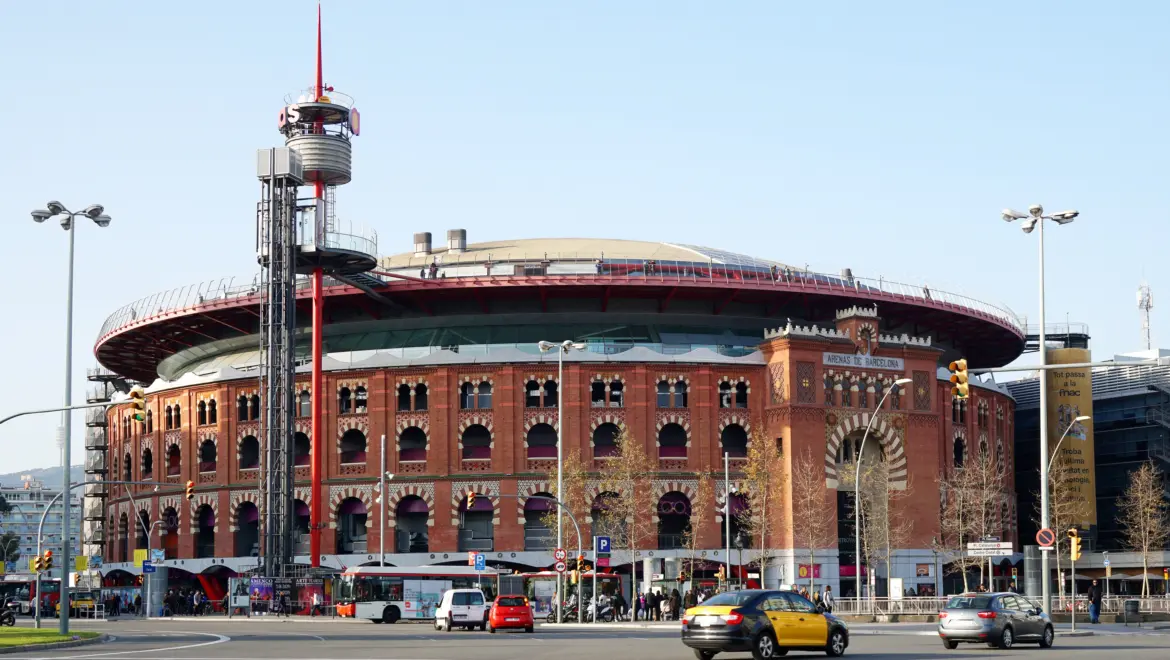Hola, my friends! After spending the afternoon wandering down from Montjuïc toward Plaça d’Espanya, something circular and beautiful immediately caught my eye – a grand red-brick building with arched windows, intricate tilework, and a hint of mystery. As I drew closer, I realized I was standing before Arenas de Barcelona, a place that felt both historic and surprisingly alive.What struck me first was its contrast: Moorish-inspired façades from another era surrounding a gleaming, glass-roofed world within. The past and present seemed to coexist here, gracefully – a story of transformation, resilience, and reinvention told in architecture.
A Place with a Past
The Plaza de Toros de las Arenas opened in 1900, designed by August Font i Carreras in the Neo-Mudéjar style, characterized by ornate horseshoe arches, patterned tiles, and rhythmic brickwork that echo Andalusian and Islamic influences.
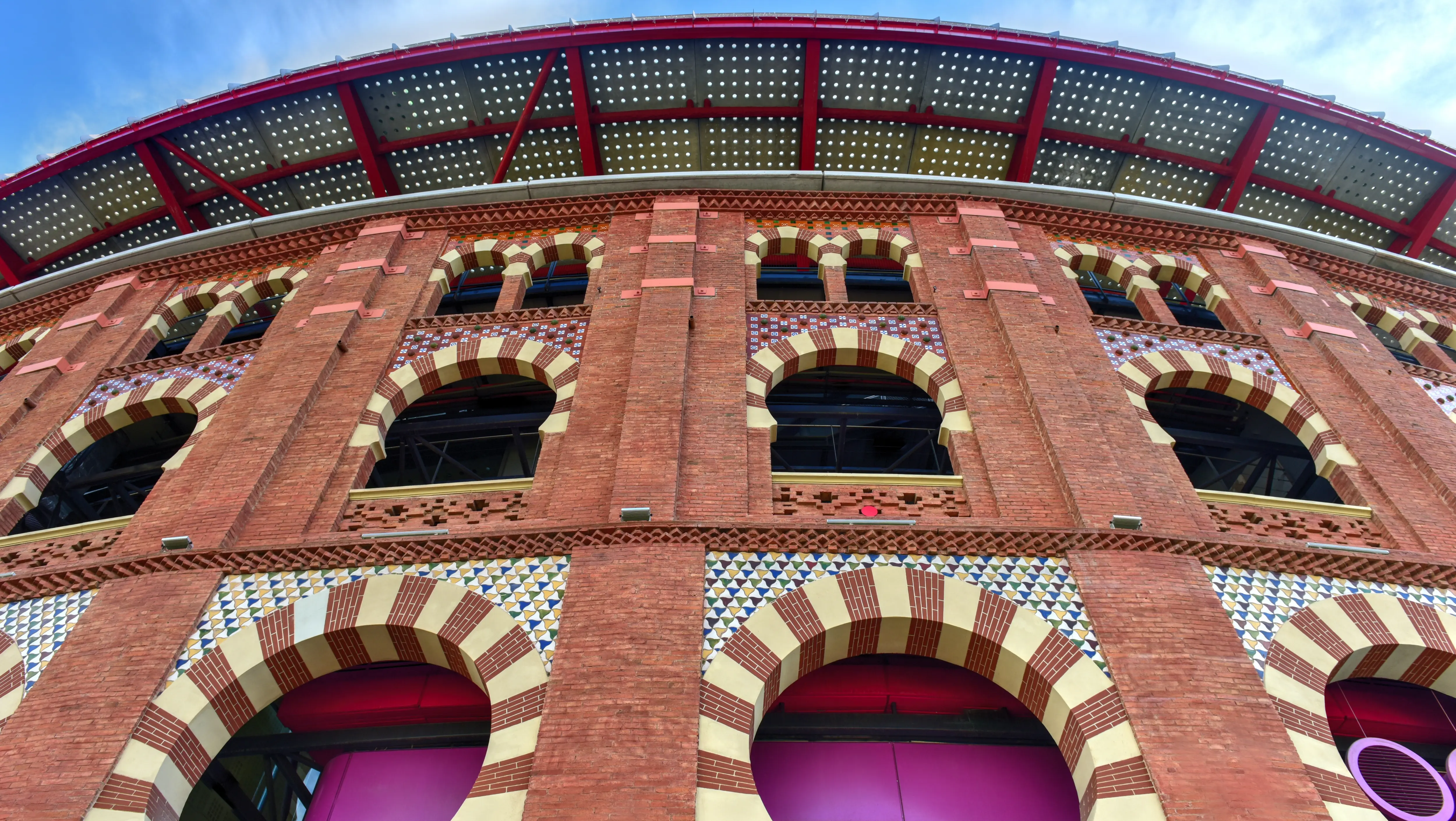
For decades, it was one of Barcelona’s main bullrings, hosting not only bullfights but concerts and public events. In its prime, the stands could hold more than 16,000 spectators, and its circular form became a recognizable silhouette on the city’s skyline. But as Catalonia’s cultural identity evolved, bullfighting fell out of favor. By the 1970s, the arena was abandoned, its echoes fading into silence. Finally, when bullfighting was banned in Catalonia in 2010, the Arenas stood as a relic of a past Barcelona had outgrown – until the city decided to give it new life.
A Modern Reinvention
In the early 2000s, an ambitious restoration project began, led by Richard Rogers, the British architect behind the Pompidou Centre in Paris, and Catalan architect Alfonso Balaguer. Their challenge: to preserve the historical façade while creating a modern, sustainable space within. The engineering was nothing short of extraordinary. The entire red-brick exterior was raised several meters on massive hydraulic jacks, while a new multi-level complex was constructed beneath it. The result? A breathtaking blend of heritage and innovation.
When it reopened in 2011, the Arenas de Barcelona had been transformed into a cultural and lifestyle center:
- Over 100 stores and restaurants fill the interior atrium.
- A cinema, fitness club, and exhibition spaces bring in locals and travelers alike.
- The glass dome ceiling floods the circular space with natural light, a nod to Barcelona’s Mediterranean soul.
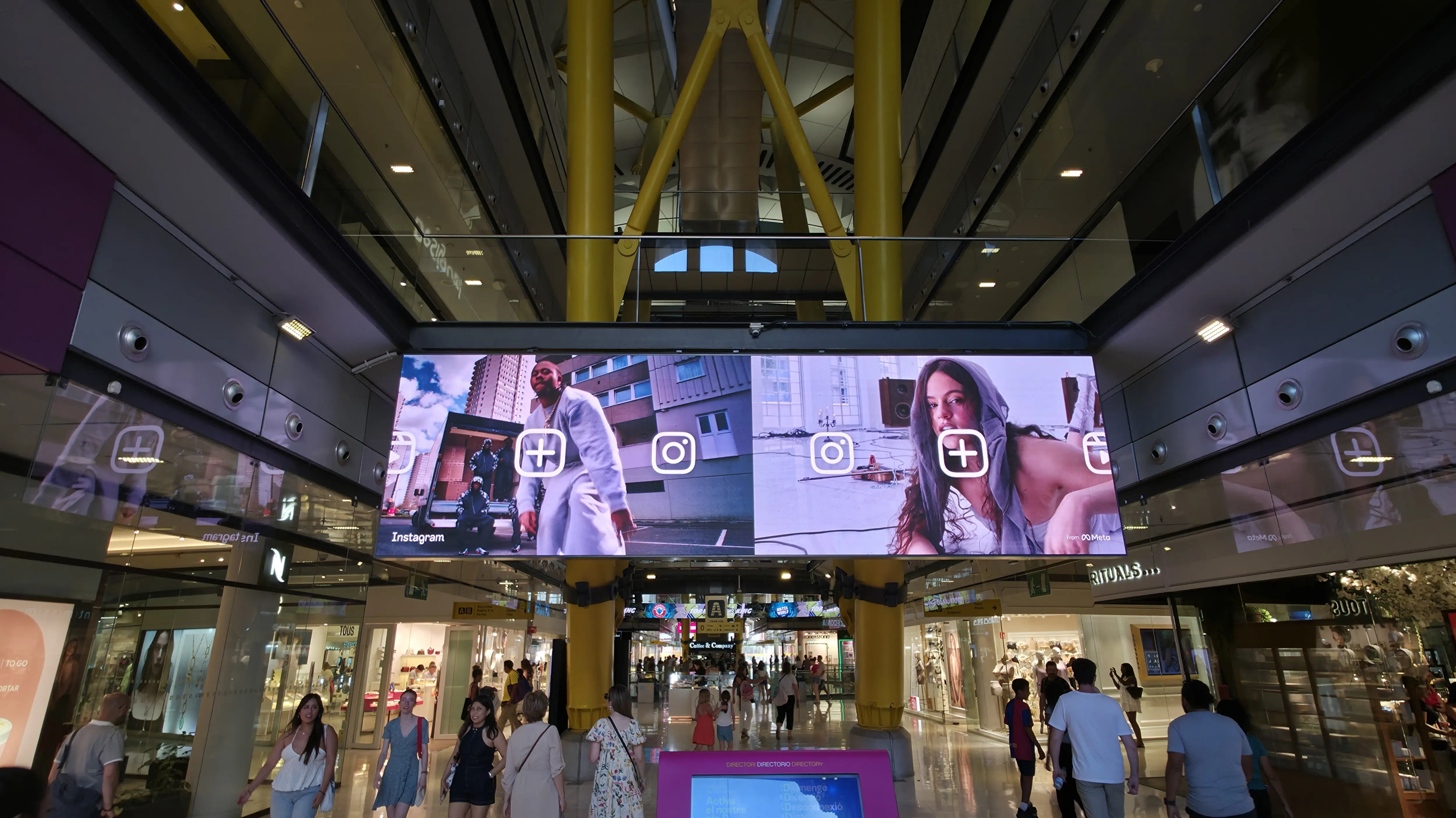
The building’s motto could easily be: “Preserve the past. Embrace the future”.
The Rooftop with the Best Views in Barcelona
If you visit, don’t miss the panoramic rooftop terrace – one of the most stunning (and free!) viewpoints in Barcelona. A 360° walkway encircles the top, offering sweeping vistas of Plaça d’Espanya, the Venetian Towers, the Magic Fountain, and the Palau Nacional rising in the distance. Come at sunset, when the city glows rose-gold and Montjuïc’s lights begin to sparkle. You can reach the terrace via a glass-walled exterior elevator, which feels like a short but spectacular ascent above the square. The rooftop is lined with cafés and restaurants – perfect for sipping cava, sharing tapas, or simply letting the city unfold beneath you.
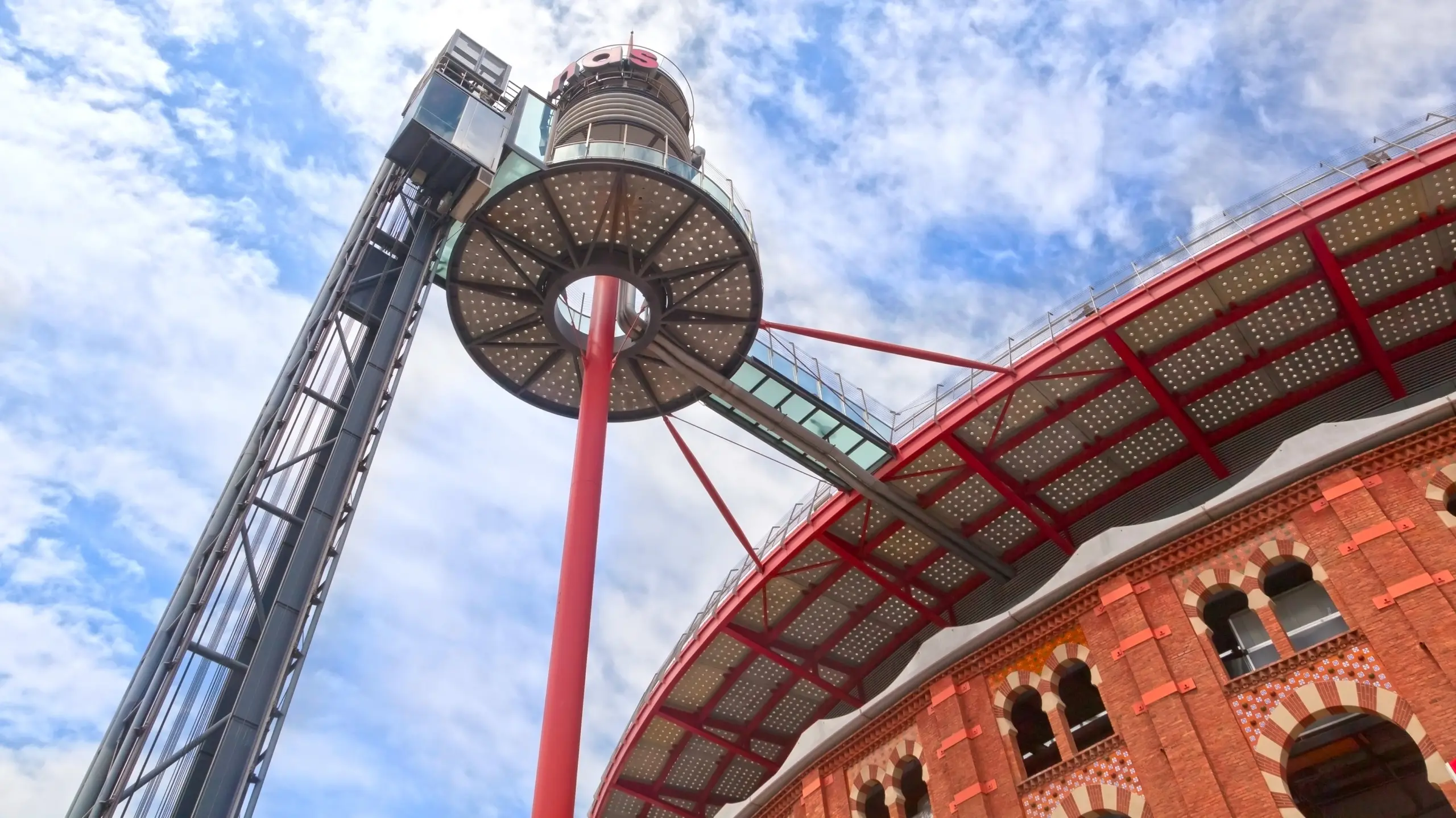
Through My Eyes
As I stepped out onto the rooftop, a soft wind brushed past, carrying the hum of traffic and laughter from below. The same circular walls that once held spectacle now held light and conversation. Families gathered for dinner, friends leaned on the railing to take photos, and the faint sound of music drifted up from Plaça d’Espanya.
I paused at the edge, watching the sun sink behind Montjuïc. The domes of the Palau Nacional turned golden, the Magic Fountain shimmered in anticipation, and the Venetian Towers framed the evening like an old photograph. It’s hard not to be moved by the symbolism – how a place once associated with conflict and tradition now radiates community and creativity. Standing there, I thought: This is Barcelona at its best; not erasing the past but transforming it with grace.
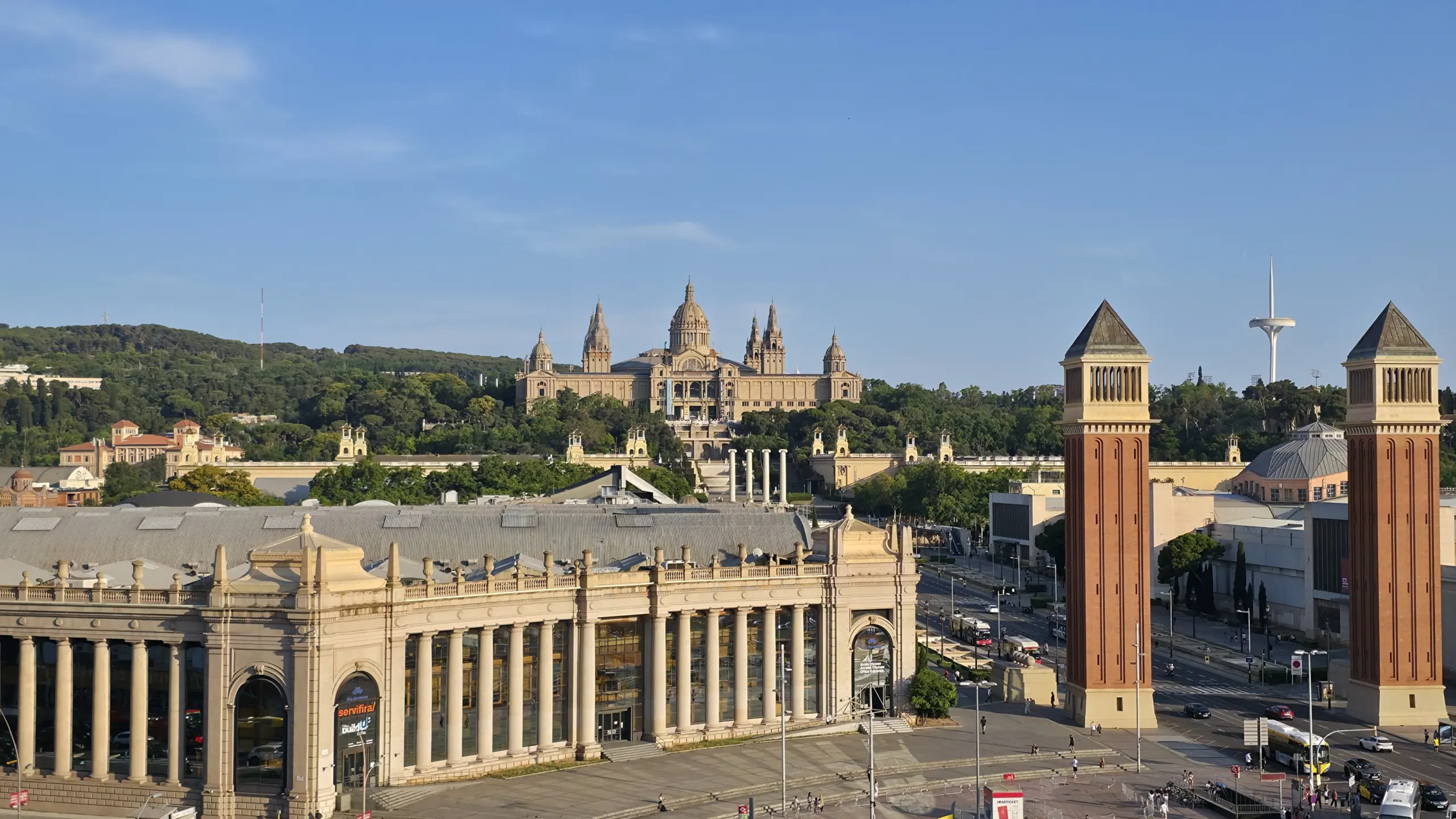
Practical Tips
- Location: Gran Via de les Corts Catalanes, 373–385 (Plaça d’Espanya)
- Metro: Espanya (L1, L3, L8)
- Opening Hours: 10:00 a.m. – 10:00 p.m. (Terrace open until late for dining)
- Rooftop Access: Free via interior escalators; exterior panoramic elevator costs €1.
- Shops: Fashion, local brands, and Spanish favorites – ideal for a relaxed shopping break between cultural visits.
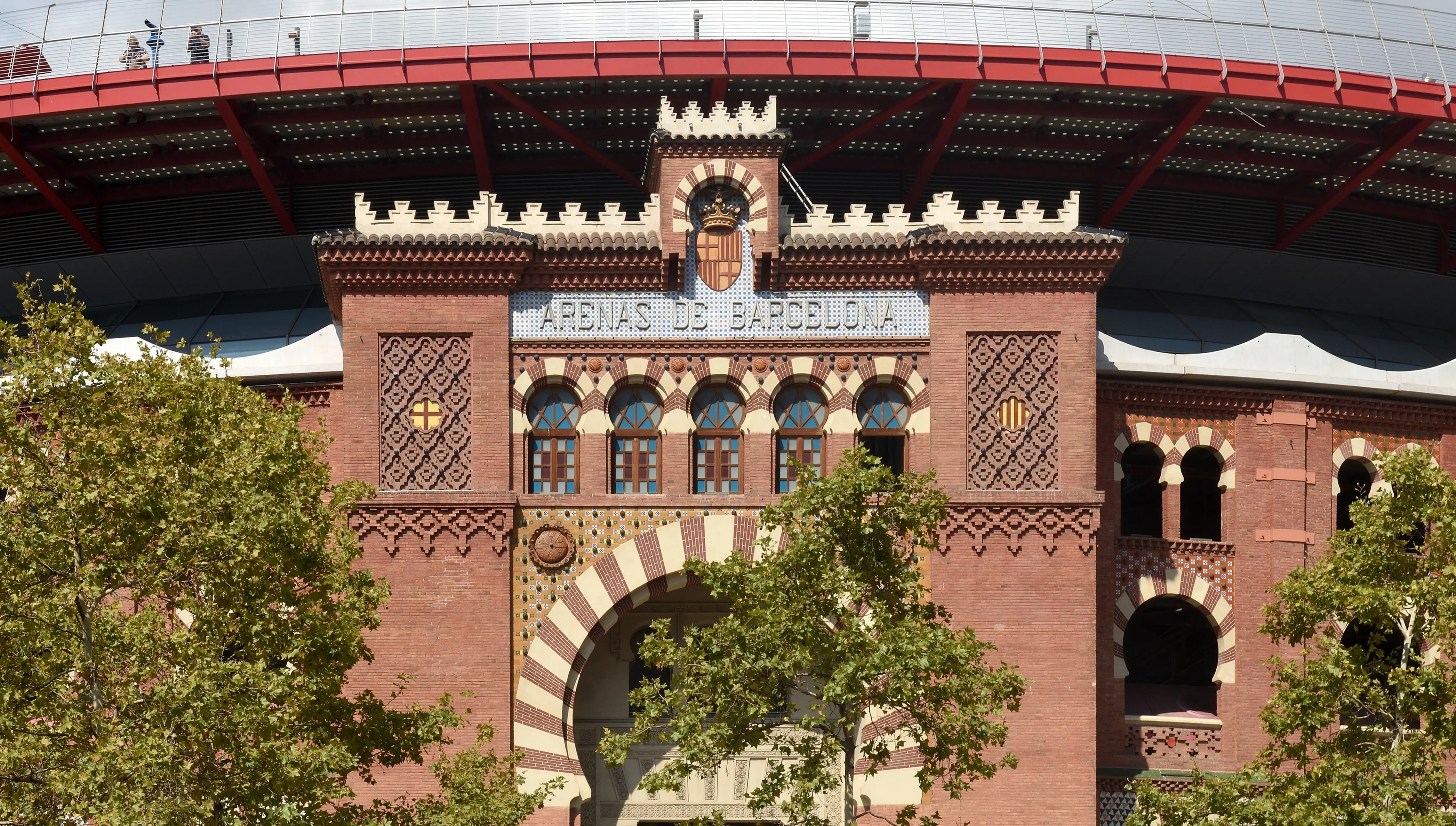
Final Thoughts
The Arenas de Barcelona isn’t just a building; it’s a story of how cities evolve and how beauty can emerge from change. Its circular form has witnessed every era: tradition, silence, renewal, and today, vibrancy.
As night fell, the red-brick façade glowed softly under the streetlights, its arches reflecting in the glass of the new structure behind it. I lingered there a moment longer, thinking how Barcelona never forgets its past, it reimagines it!
And that, perhaps, is what makes this city so endlessly inspiring.
xoxo,
Bubbly🎈

